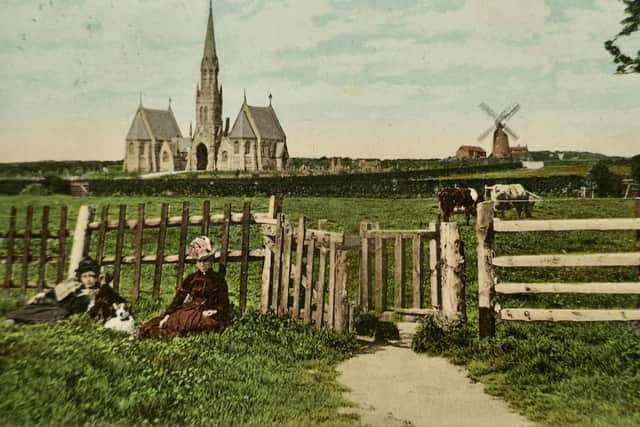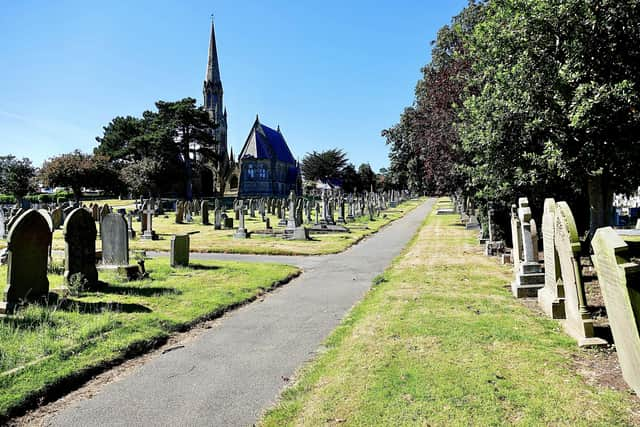The ‘Now and Then’ column with Aled Jones: People have an affinity with the Cemetery Chapel on Sewerby Road


Designed by the architect Alfred Smith of Nottingham in 1879, the structure is a Grade II listed building under English Heritage protection.
The historic chapel is the focus of this week’s vintage postcard, seen here during the Edwardian era (note the ladies in formal attire posing for the camera). The beautiful rustic scene looks so inviting, with a natural and peaceful spirit. Just glancing at it makes me feel at one with God and nature.
Advertisement
Hide AdAdvertisement
Hide AdThe cemetery is shown when it was much smaller than it is today, with a farmer’s field occupying the current bottom corner. A wooden gate is seen (middle, left), reminding us there was once an entrance to the cemetery from this point.


While no longer used as a chapel of rest, with the interior now inaccessible to the public, there’s still a lot to explore. The good news is that the building has several noteworthy visual features. Indeed, the symmetrical nature of the edifice is just stunning, with its slender central tower flanked by arcade walkways, leading to fine chapel wings embellished by decorated tracery.
Most locals feel a powerful affinity with the Victorian chapel, not least for the imposing presence it has over the cemetery, a solemn reminder of the omnipresence of God. At times it’s almost as if real angels inhabit the cemetery, so lovely is a walk in the sunshine here.
Beautiful sculptural gravestones abound in the cemetery, some of which date to its original founding, and are well worth a special visit to see.
Advertisement
Hide AdAdvertisement
Hide AdClose by is the famous medieval wonder of Bridlington Priory, another of the town’s Gothic delights, where funeral services are regularly held before burial in the Cemetery Chapel.
Note the traditional windmill in the right background of the postcard. This was located on Bempton Lane and was known as Dukes’s Mill, after Moses Dukes who built it in 1823. It stayed in operation right up to the outbreak of WW1.
In 19th-century Bridlington, there were dozens of windmills and water mills for corn grinding, leading to a substantial trade in corn through the Quay. Most water mills were located along the ancient Gypsey Race stream.